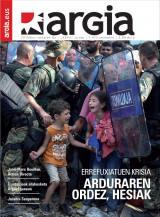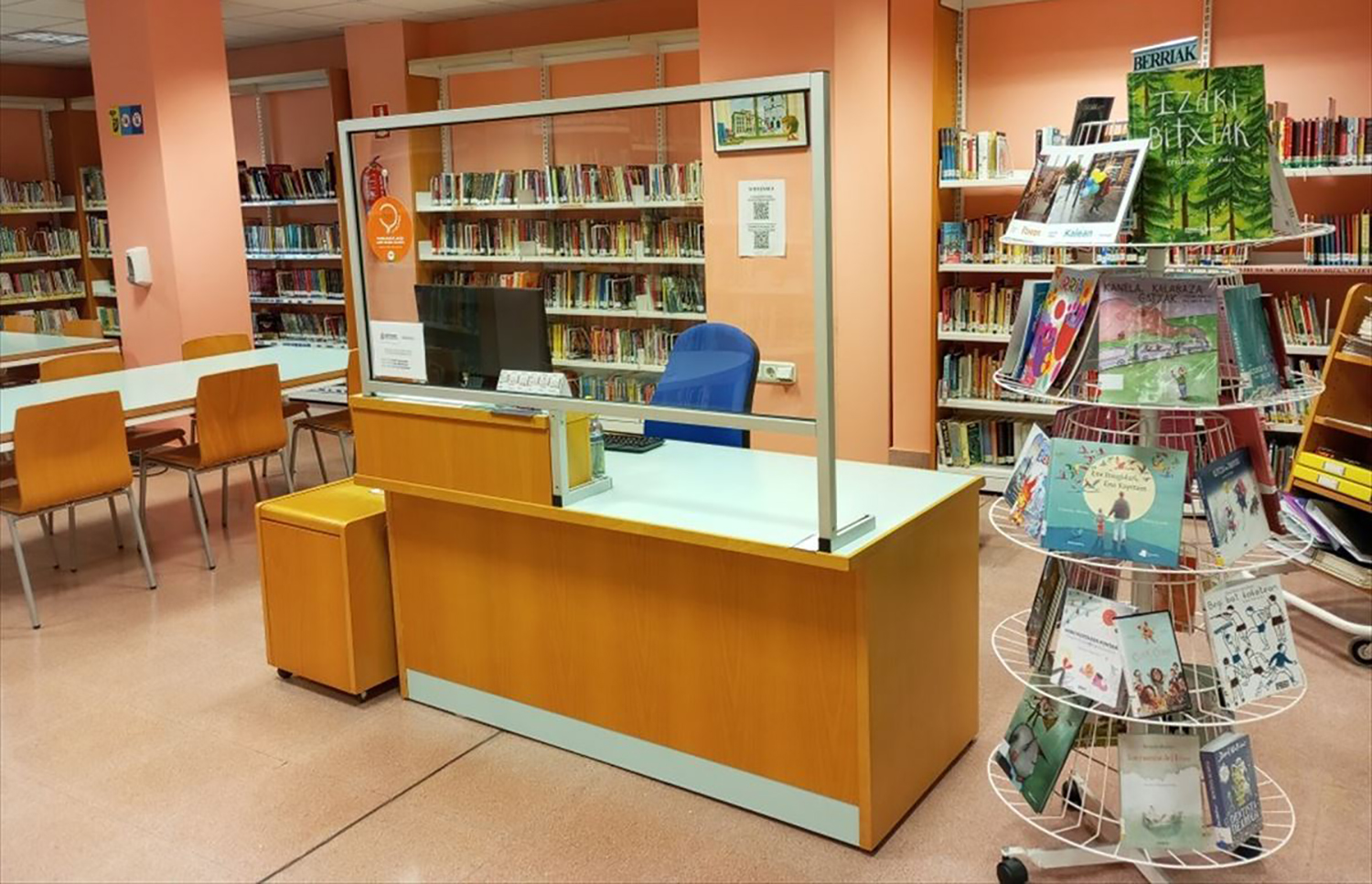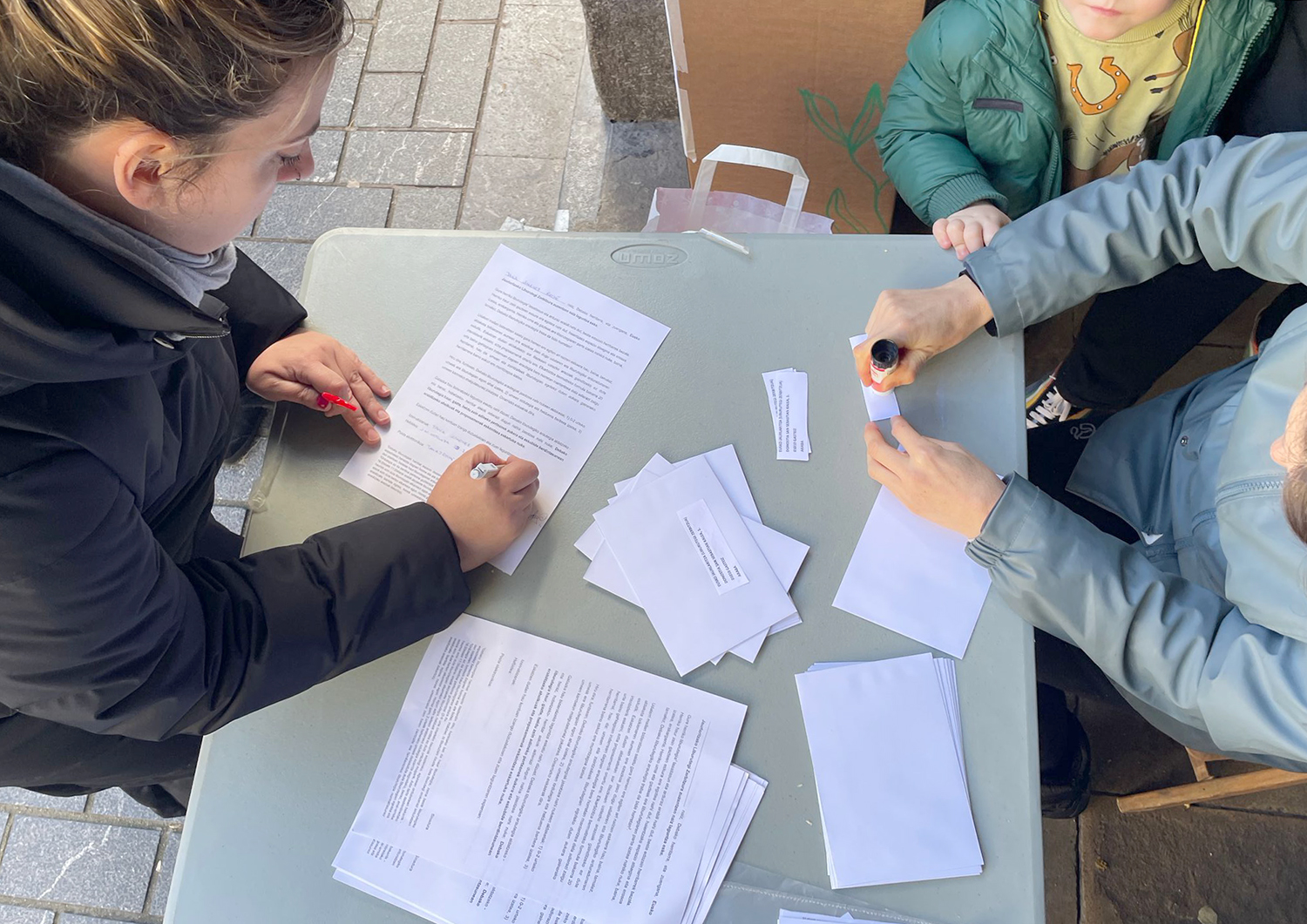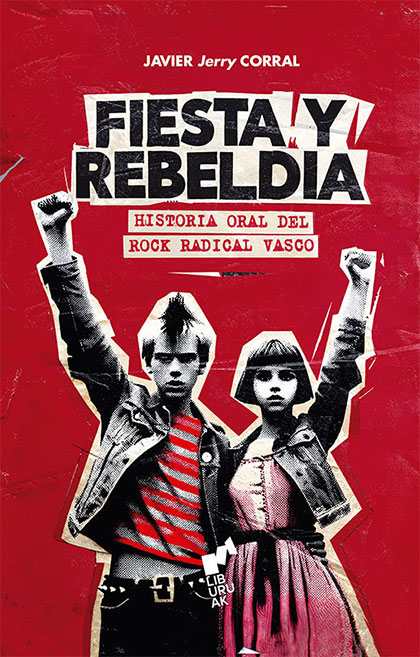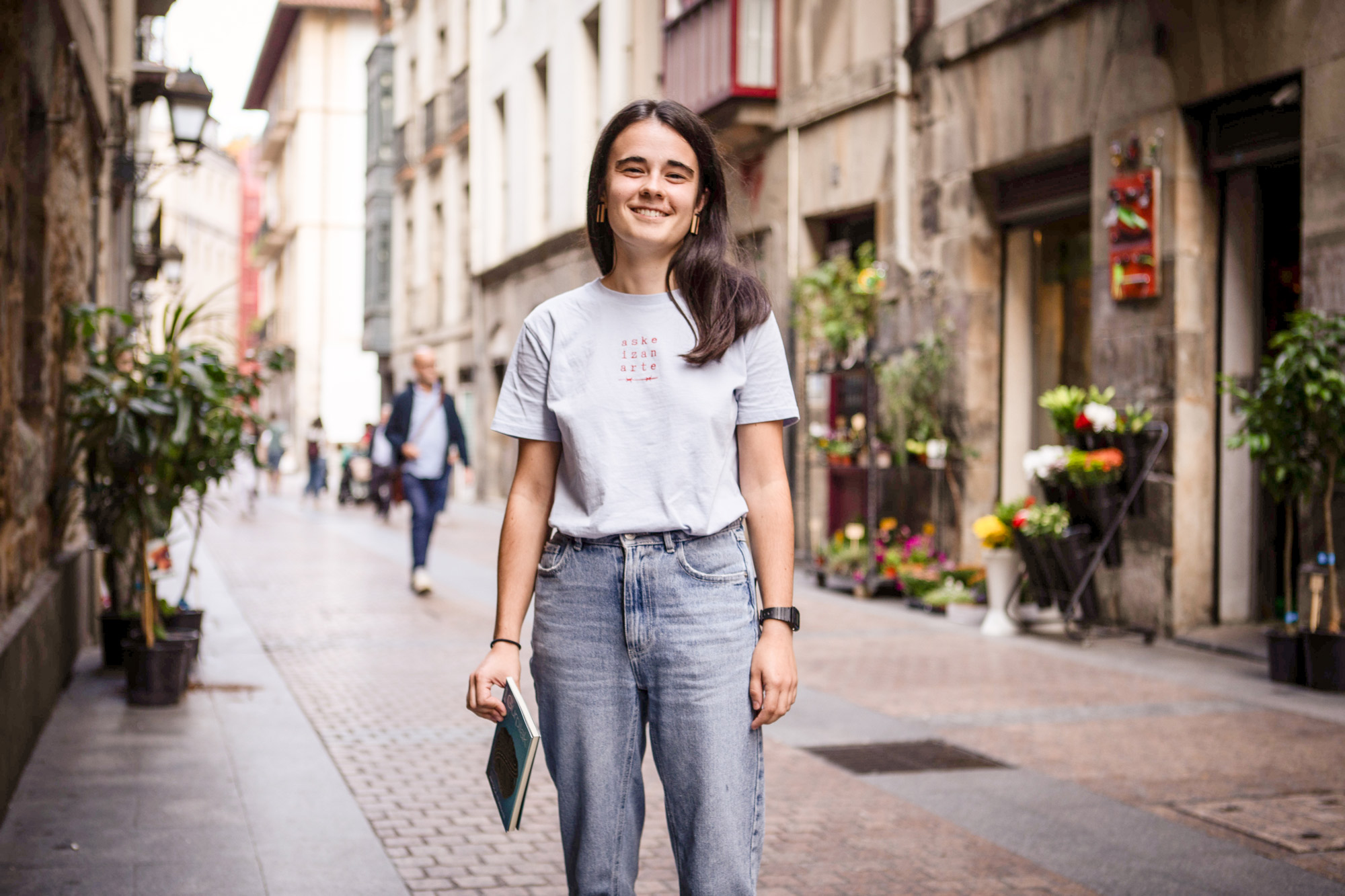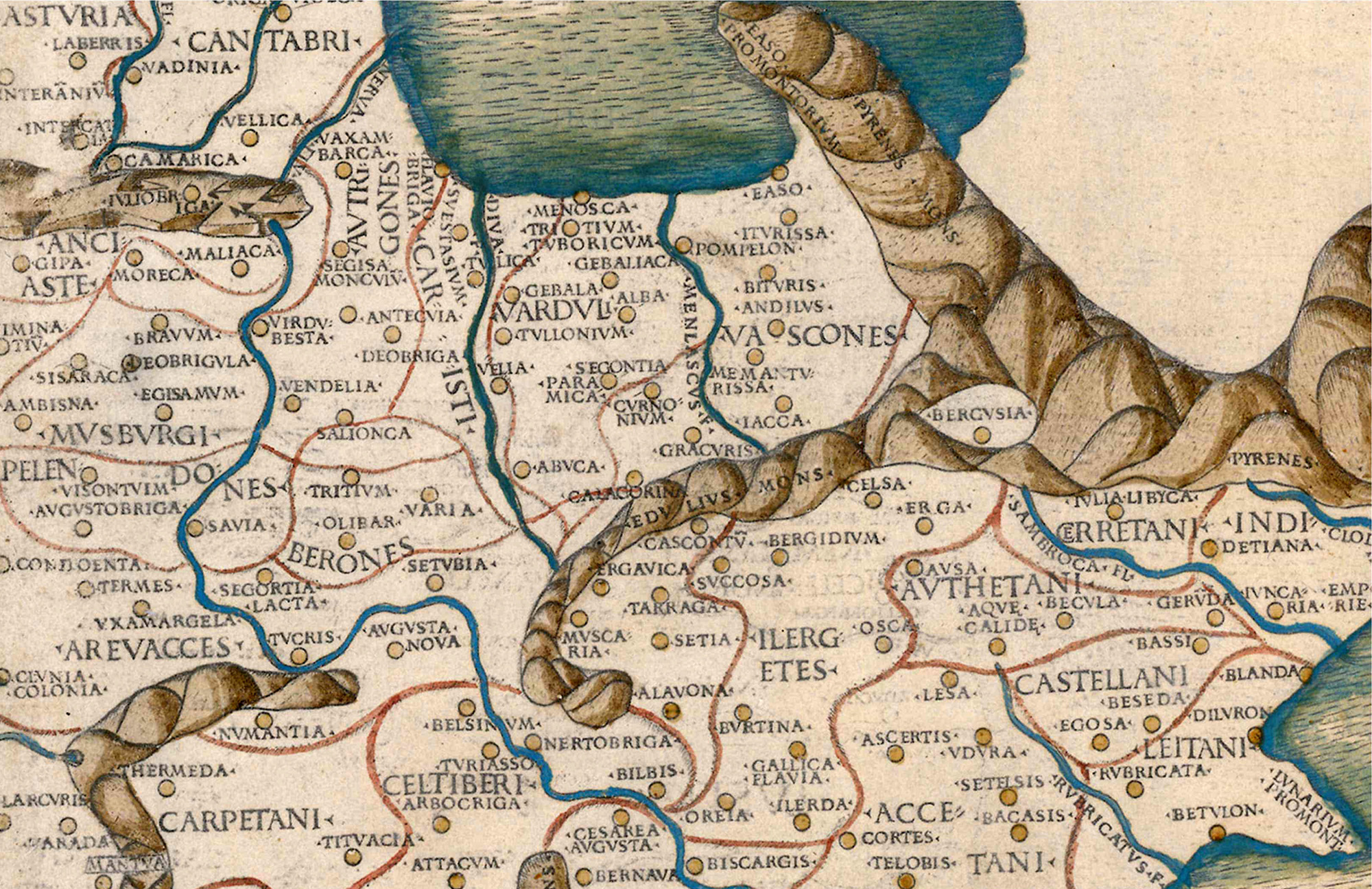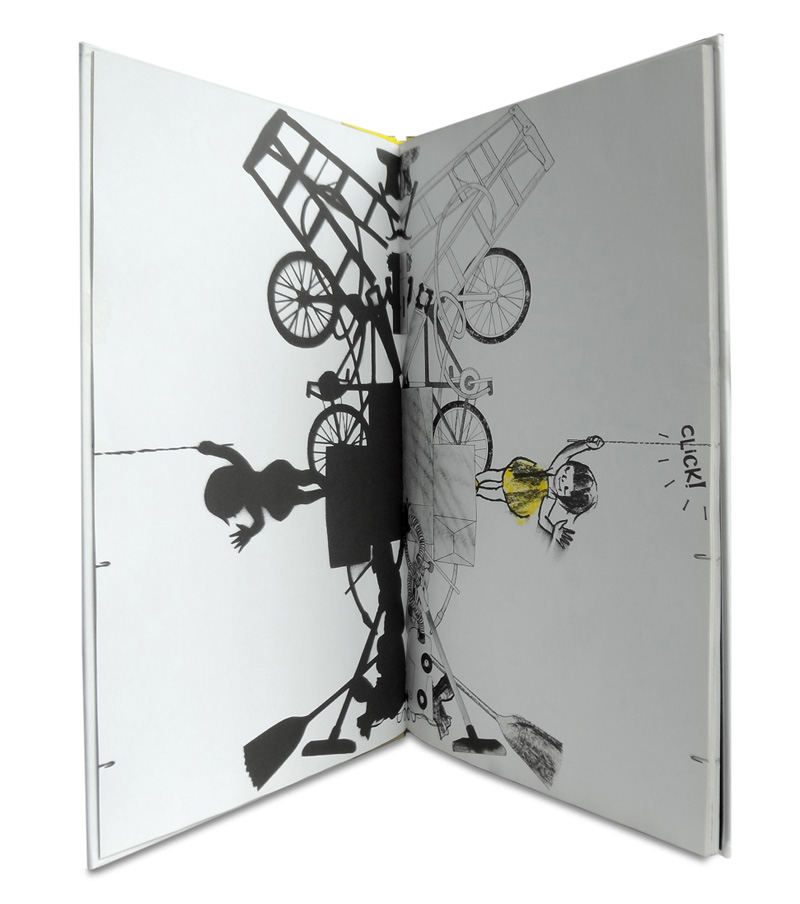Society
Environment
Politics
Economy
Culture
Basque language
Feminism
Education
International
Opinion
friday 28 march 2025
Automatically translated from Basque, translation may contain errors. More information here. 
Immersed in fantasy
- Spinning in the roundabout Leire Bilbao Illustrations: Eider Eibar Elkar, 2015
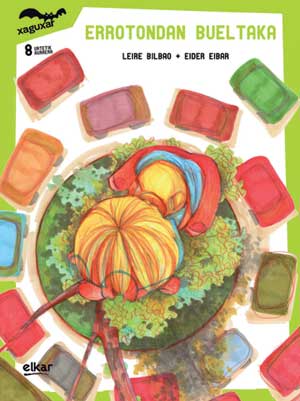
Zarata mediatikoz beteriko garai nahasiotan, merkatu logiketatik urrun eta irakurleengandik gertu dagoen kazetaritza beharrezkoa dela uste baduzu, ARGIA bultzatzera animatu nahi zaitugu. Geroz eta gehiago gara, jarrai dezagun txikitik eragiten.
Starting from a simple and everyday situation, Leire Bilbao presents us with an imaginative and fantastic work, which has a reality tint at first, when Urko prepares to go to school, when he goes late and without urinating he goes up the bus. This is the starting point and the reason for all subsequent events. Urko, on the bus, is getting more and more urine, and next to a roundabout, with the red traffic light, she's going down a time to urinate. Of course, the bus escapes and the boy stays inside the roundabout, in a separate territory, admirable, in a situation similar to that of the book Alizia, which he carries in the backpack.
Nonsense, or nonsense, is the main feature of Lewis Carroll's novel, and this story is similar to that of Leire Bilbao, where we will discover characters and curious situations from the persecution of the topos that are continually digging in the roundabout. A deer filled with bulbs, a traffic light bulb… or a stone that speaks:
“Listen, I know I have a hard head… but I don’t have to endure the smell of your legs,” he said with the voice of those who have their nose closed.
"Wow!" The only one I was missing! A stone that knows how to speak – I said with a surprised shout.
“I am not a stone. I am Harry – he said flatly.”
The absurdity has some humor, because it's funny what happens to Urko, has friends who find curious and curious people to talk to.
The story is composed of facts, short chapters and helps to read, the reader is a person who is asking from here to there, and although the sensation of the passage of time is slow, the day advances.
When the bus is back, in the roundabout… “Miss Miren has noticed me, or at least that has seemed to me to see her face scared. (…)
“It was Txizalarri, Miss. And I couldn't contain the need to vent myself.
“Quick, come in!” If your mother knows! he said. No, it’s better that you don’t know – add later.”
As you can see, the crudest reality coincides with the greatest fantasy in this entertaining and loving story. And that tone is also reflected in the images of Eider Eibar; vivid colors, different visions, different sizes and shapes, shaping and enriching the thread of the story.
The reader who walks into the pages of his book Errotondan back, as a girl chasing the rabbit, will dive into a fantastic world until the Tyrannosaurus, the bus Barka, appears and returns to our reality. n
Starting from a simple and everyday situation, Leire Bilbao presents us with an imaginative and fantastic work that has a reality tint at first, when Urko prepares to go to school, when he goes late and goes on the bus without urinating. This is the starting point and the reason for all subsequent events. Urko, on the bus, is getting more and more urine, and next to a roundabout, with the red traffic light, she's going down a time to urinate. Of course, the bus escapes and the boy stays inside the roundabout, in a separate territory, admirable, in a situation similar to that of the book Alizia, which he carries in the backpack.
Starting from a simple and everyday situation, Leire Bilbao presents us with an imaginative and fantastic work, which has a reality tint at first, when Urko prepares to go to school, when he goes late and without urinating he goes up the bus. This is the starting point and the reason for all subsequent events. Urko, on the bus, is getting more and more urine, and next to a roundabout, with the red traffic light, she's going down a time to urinate. Of course, the bus escapes and the boy stays inside the roundabout, in a separate territory, admirable, in a situation similar to that of the book Alizia, which he carries in the backpack.
Nonsense, or nonsense, is the main feature of Lewis Carroll's novel, and this story is similar to that of Leire Bilbao, where we will discover characters and curious situations from the persecution of the topos that are continually digging in the roundabout. A deer filled with bulbs, a traffic light bulb… or a stone that speaks:
“Listen, I know I have a hard head… but I don’t have to endure the smell of your legs,” he said with the voice of those who have their nose closed.
"Wow!" The only one I was missing! A stone that knows how to speak – I said with a surprised shout.
“I am not a stone. I am Harry – he said flatly.”
The absurdity has some humor, because it's funny what happens to Urko, has friends who find curious and curious people to talk to.
The story is composed of facts, short chapters and helps to read, the reader is a person who is asking from here to there, and although the sensation of the passage of time is slow, the day advances.
When the bus is back, in the roundabout… “Miss Miren has noticed me, or at least that has seemed to me to see her face scared. (…)
“It was Txizalarri, Miss. And I couldn't contain the need to vent myself.
“Quick, come in!” If your mother knows! he said. No, it’s better that you don’t know – add later.”
As you can see, the crudest reality coincides with the greatest fantasy in this entertaining and loving story. And that tone is also reflected in the images of Eider Eibar; vivid colors, different visions, different sizes and shapes, shaping and enriching the thread of the story.
The reader who walks into the pages of his book Errotondan back, as a girl chasing the rabbit, will dive into a fantastic world until the Tyrannosaurus, the bus Barka, appears and returns to our reality.
Most read
Using Matomo
#1
Amets Aranguren Arrieta
#3
Tere Maldonado
#4
Mikel Garcia Idiakez
#5
You are interested in the channel: Liburuak
2025-02-11
Mikel Garcia Idiakez
The City Council says Deba's library has "limited space" to prohibit children from being present at most hours
Children under 6 years of age can only stay at Deba’s library for an hour a day. The municipal government has argued that "the available space in the library is limited," but it has not clarified why the time restrictions they impose for this limited space only apply to... [+]
2025-02-04
Mikel Garcia Idiakez
The Government is asked to intervene in the face of the exclusion suffered by children in the library of Deba
Several citizens of Deba have sent a massive letter to the Basque Library Service responsible for the management of public libraries, asking it to intervene in the face of the discriminatory regulations of the local library. Children under 6 years of age can only stay in the... [+]
2025-01-30
Iker Barandiaran
Our past and background in context
Party and recreation. Oral History of Rock Radical Vasco
Javier 'Jerry' Corral
Books, 2025
------------------------------------------------
Javier Corral ‘Jerry’ was a student of the first Journalism Promotion of the UPV, along with many other well-known names who have... [+]
2025-01-21
Mikel Garcia Idiakez
Children are forbidden to be in Deba’s library most of the time
Children under 6 years of age can only stay in the library between 16:30 and 17:30 in Deba, and children under 2 years of age are forbidden directly. They are also subject to other exclusionary measures. Visible discrimination only separates children from literature, and a long... [+]
2025-01-08
ARGIA
The Hontza library of Donostia-San Sebastian will close if no relief is found
The site of the mythical bookstore of Okendo Street from Donostia-San Sebastián has been put for sale and will close the doors if there is no group that takes the relay. The bookmakers have explained to ARGIA that it has not been easy to make the decision, but some owners have... [+]
2024-11-28
Mikel Garcia Idiakez
"Education has to be quiet and indifferent."
In the round table for the presentation of the book Superpowers, the Contertulios have claimed "to leave the exhausting speed of daily life and take time to dream of the school project". They have calmly devoted themselves to transformation, to impotence, to illusion, to the... [+]
2024-11-05
Mikel Garcia Idiakez
Presentation of the book 'Abentura erraldoia' accompanied by a handrail of giants and heads, this Friday in Gros de Donostia
The comparison of giants and heads from the Donostiarra neighborhood of Gros will feature a kalejira and a dance enlivened by the presentation of books organized by ARGIA this Friday: A great adventure. The authors Gorka Bereziartua and Adur Larrea present the kalejira Salba... [+]
2024-10-21
Garazi Zabaleta
Book "Haziak"
“With the book we want to encourage people to start producing seeds”
Miguel Arribas Kelo and Marc Badal, authors of the book Haziak, have been working in the seed world for many years. In addition to practical explanations on seed reproduction, historical, economic, political and cultural elements have been collected, so it can also be... [+]
2024-10-19
ARGIA
Erraldoiak protagonista dituen liburua atera du ARGIAk haurrentzat
MULTIMEDIA - elkarrizketa
2024-10-16
Leire Vargas Nieto
Eztizen Artola Iturrate
"We've been so romantic about the case, we're not aware of the consequences that prison can have."
The day has come: Ihintza's father will be released from prison. This is the time for the opening of the novel Pneumak (Txalaparta, 2024), by Eztizen Artola (Bilbao, 1999). From there, the child will grow up with a backpack on his travels to jail to visit his father, in order to... [+]
2024-10-09
Leire Ibar
Jon Gerediaga, Harkaitz Cano and David de las Heras will be the winners of the Euskadi Literature Awards
At a press conference held on 9 October in Bilbao, the first vice-president of the Basque Government and Councillor for Culture and Linguistic Policy, Ibone Bengoetxea, announced the winners of the Euskadi Prize for Literature.
2024-09-16
Estitxu Eizagirre
The book 'Haziak' will be presented on 20 September at the Azpeitia Food Centre
The first presentation of the book will be on Friday, September 20, at 18:30 pm, at the Food Center of Azpeitia. The programme will involve the authors Miguel Arribas Kelo and Marc Badal, the translator Markel Lizasoain, the designer Maitane Gartziandia and the photographer Dani... [+]
2024-07-17
Urko Apaolaza Avila
Historical cartography of the Basque Country
The trail of maps in the history of a people
It is known that cartography represents much more than the characteristics of a town or territory. Hand maps have conquered continents and empires have been built throughout history, and cultural and political identities have been defined with squads and cartabons. Peoples... [+]
2024-07-04
Ainhoa Aldazabal Gallastegui
Chronic: Day 'Brave Books'
Silent, mute, white... and brave
On 23 February we went to Zaragoza (Aragon) a friend and I. She's a teacher of Early Childhood Education and I'm a literary energizer. Album! The course organized by the association (structure that brings together independent editorials that publish children's and youth literature)... [+]
Eguneraketa berriak daude









